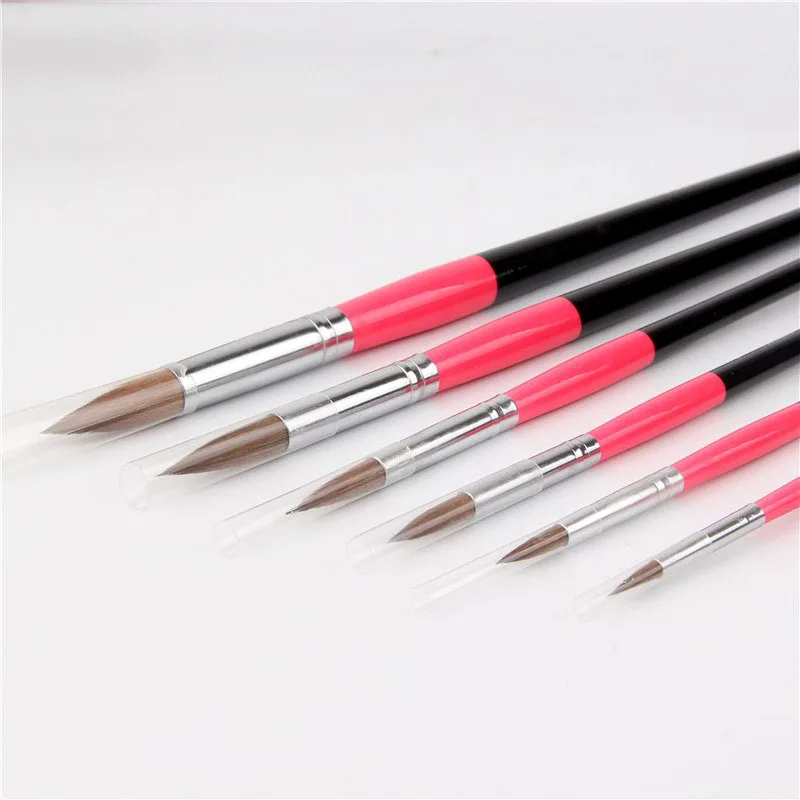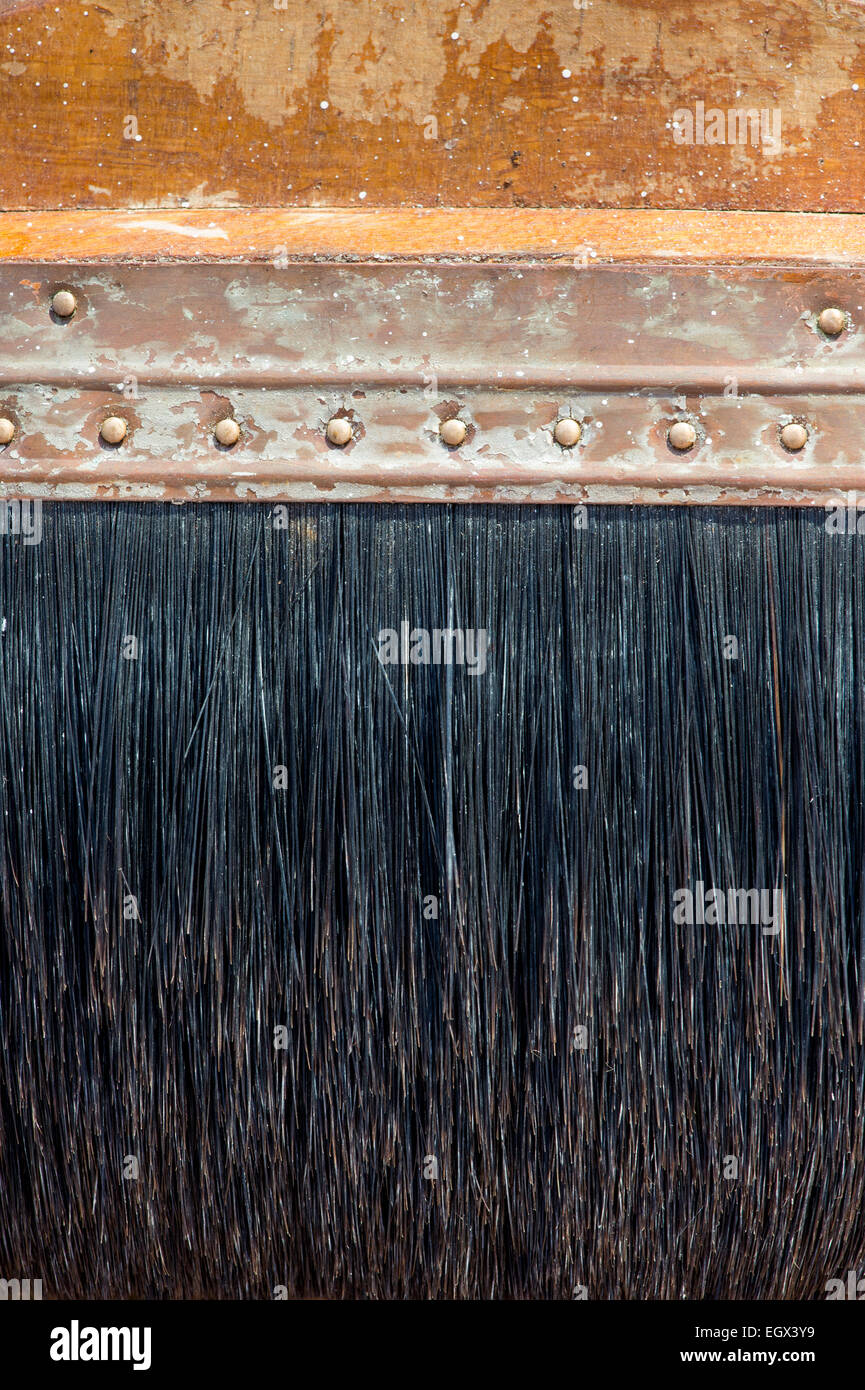The ANVIL Texture Brush is the ideal brush to use for many popular drywall finishes. Made of a combination of horsehair and fiber bristles. It has a high-impact plastic base that accepts most standard threaded handles. Bristles of gray flared horsehair and polypropylene.
- SCRUBIT Horsehair Shoe Shine Brush 6.75” - 100% Soft Horse Hair Bristles & Beech Wood Handle Leather Cleaner - Polishing Brush for Shoes, Sneakers, and Boots - Easy Grip Shoe Polish Brush 12 $9 99.
- Used to brush away wax to leave a glossy finish or even apply wax. Paint Brushes; Airbrush; Stickers; Apparel. Home / Brushes - 100% Real Horsehair.
- Horsehair is desirable for paint brushes because of its smooth lay and ability to hold a large amount of paint acting as a reservoir and allowing the painter to stop less frequently. Horsehair is used for violin and other stringed instrument bows. Another use in the art community comes from pottery and basket weaving where the hair is used for distinct accents and styling.
- Wooster’s new paintbrush and roller packaging is designed specifically to make proper tool selection easier.
Horsehair is the long, coarse hair growing on the manes and tails of horses. It is used for various purposes, including upholstery, brushes, the bows of musical instruments, a hard-wearing fabric called haircloth, and for horsehair plaster, a wallcovering material formerly used in the construction industry and now found only in older buildings.
Horsehair can be very stiff or very fine and flexible; mane hair is generally softer and shorter than tail hair. The texture of horsehair can be influenced by the breed and management of the horse, including natural conditions such as diet or climate. Processing may also affect quality and feel.
Horsehair is a protein fiber that absorbs water slowly, but can be dyed or colored effectively using traditional dyes suitable for protein fibers. It can be felted, but not easily.[1]

Horsehair Paint Brush Set
Uses[edit]
Horsehair fabrics are woven with wefts of tail hair from live horses and cotton or silk warps. Curl not showing output. Horsehair fabrics are sought for their lustre, durability and care properties and mainly used for upholstery and interiors.[2]
Horsehair is used for the crafts of horsehair hitching, horsehair braiding, pottery, and in making jewelry items such as bracelets, necklaces, earrings and barrettes.[3] It is used to make some wall and fine arts paintbrushes. Painting is one of the areas where horsehair is still widely used today. The horsehair is processed, cut to size and fitted to paint brushes that are used for anything from painting walls to painting pictures to be hung in galleries. Horsehair is desirable for paint brushes because of its smooth lay and ability to hold a large amount of paint acting as a reservoir and allowing the painter to stop less frequently.[4]

Horsehair is used for violin and other stringed instrument bows. Another use in the art community comes from pottery and basket weaving where the hair is used for distinct accents and styling.[5]

The use of horsehair for fishing has a wide range of applications. The most widely applied use for horsehair is in the fishing line. The hair is spun together and made into very long lines.[6]
One historic use was for gloves commonly used for fishing in the medieval age leading up to the 17th century in cold climates.[7]
In the early 1900s, surgeons would use horsehair and silver wires to suture the incisions needed for a facelift.[8]
Supply[edit]
Most horsehair comes from slaughtered horses.[9]Hair for bows comes from tails of horses in cold climates, and is sorted by size.[9] It comes primarily from stallions and costs $150–$400 per pound because of the sorting needed to extract long hairs.[10]Mongolia produces 900 tons of horsehair per year.[11]
History[edit]
There has been some speculation as to the first use of horsehair. Many sources indicate the Spaniards in the 8th century were the first to use horsehair as a textile.[12] However, the first documented use was from the 9th century in Switzerland where the Swiss used it for the plans of St. Gall Abbey. The plans, a blueprint for a monastic compound in medieval times, are a national preserved treasure to the Swiss that were said to have been woven with horsehair.[13] Backblaze b2 nextcloud. Idvd 7.1.2 update.
It was commonly used in the 19th century as upholstery stuffing (such as for fabric sofas[14]) and as covering fabric for furniture. It was almost always the fiber used to make shaving brushes. It was also common in hats and women's undergarments. It was used in the hair to create the 'Gibson Girl' look, and in the 18th century it was used in wigs. Until the 20th century, it was commonly used to make fine arts paintbrushes, along with sable, fox, wolf, goat, and lamb hair.[citation needed]Calligraphy brushes are made from rabbit, fox, or horse hair, among others. For thousands of years, fishing lines were made of plaited horsehair.
Horse Hair Paint Brush
Other applications[edit]
In modern times, mane and tail horsehair samples with root tissue attached are commonly used for DNA analysis of equine specimens. Private genetic testing companies regularly use the DNA extracted from the root follicle of horsehair for relationship testing, genetic disease assays and determining coat color genetics.[15]
Japanese Horse Hair Paint Brushes
See also[edit]
- Mohair – Goat hair
References[edit]
- ^Fröberg, Kerstin. 'Horsehair as a Textile.' 1998. Accessed December 8, 2010.
- ^Horsehair fabrics woven by John Boyd Textiles
- ^http://Horsehair-Jewelry&id=226245[dead link]
- ^Martha Stewart Living Oct2008, Issue 179, p51-52
- ^Art Institute of Chicago Museum StudiesArchived 2008-07-19 at the Wayback Machine, Vol. 31, No. 1, Objects of Desire: Victorian Art at the Art Institute of Chicago pp. 68-88+94-96
- ^Johnson, Victor R. America's Fly Lines: The Evolution of the Modern Fly Line from Its Horsehair and Silk Beginnings. Vallejo, Ca.: EP, 2003. 115. Print
- ^Congram, Marjorie. Horsehair: A Textile Resource. Martinsville, NJ: Dockwra, 1987. 43-46. Print
- ^Dr. Konstantin Vasyukevich, MD - Understanding Facelift Terminology
- ^ abRutherford, David (2014-04-20). '10 facts about the horsehair on a string player's bow'. Colorado Public Radio. Retrieved 2018-06-01.
- ^Baer, Susan (2013-01-17). 'High Notes: Getting to Know Your Horsehair'. Suzuki Association of the Americas. Retrieved 2018-06-01.
- ^Bolormaa, Bazarsad; Drean, Jean Yves; Enkhtuya, Dorj (2008-03-06). 'A Study of the Diameter Distribution and Tensile Property of Horse Tail Hair'. Journal of Natural Fibers. 4 (4): 1–11. doi:10.1080/15440470801893281. ISSN1544-0478.
- ^Columbia Electronic Encyclopedia, 6th Edition 7/1/2010, p1-2
- ^Birmingham, David. Switzerland: A Village History. Athens, OH: Swallow, 2004. 221-24. Print
- ^Chesterfield Sofas – A History Lesson - January 2010
- ^Drissing J., Rudbeck L., Marcher H. (1996): A five minute procedure for extraction of genome DNA from whole blood, semen and forensic stain for PCR. In: Carracedo A. (ed.): Advances in Forensic Haemogenetics. Springer-Verlag, New York. 269–271

External links[edit]
